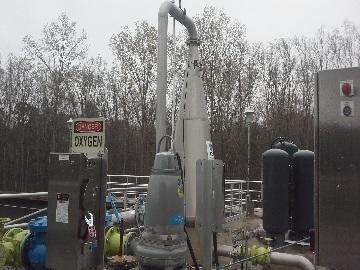
Section Branding
Header Content
As Harbor Expansion Nears, Corps Prepares To Offset Environmental Impact
Primary Content

The Army Corps of Engineers this month awarded the first dredging contract for the expansion of the Port of Savannah. That means work to deepen the river channel is getting underway after years of studies and legal challenges. But Savannah won’t be seeing dredging rigs any time soon. First, the Corps has to offset the project’s environmental impact.
We hear a lot about what the Savannah Harbor Expansion Project will mean for Georgia’s economy. Ships will be able to carry more cargo up the river. Supporters say that will lower costs for businesses that rely on the port - savings they’ll pass on to consumers.
But deepening a river is complex, and it involves more than just allowing for bigger ships and more trade.
"Some of the main effects that environmentalists are concerned about is the decrease in dissolved oxygen in the water," says Corps spokesman Russell Wicke. "There’s a lot of critters that depend on that oxygen. So we’re not just talking about fish, but also shellfish, mussels, invertebrates, all kinds of sections in the food chain. And you know you impact one and you impact all the levels up to birds and even humans."
Dredging will start soon to deepen what’s called the outer harbor - the route ships take from the Atlantic Ocean into the mouth of the river. But before work can start farther upstream, the Corps has to make up for the expected drop in oxygen level.
The plan is to replace the oxygen using something called speece cones. There’s already one running at the wastewater treatment plant in nearby Port Wentworth. There, oxygen extracted from compressed air is stored in a tall, green tank until it’s needed, then travels through a tube to meet treated wastewater in the speece cone.
"And then there’s another stainless steel tube that comes back and goes to the top of the speece cone, which kinda looks like the old Gemini space capsule," says Water Reclamation Director James Stewart, who runs the plant. The oxygen and water meet in the narrow top of the roughly ten-foot-tall stainless steel cone, then mix together as they reach the bottom. "And then as it falls down in the cone-shaped cylinder, the air bubbles put the oxygen into solution."
From there, the oxygen-filled water travels through a pipe to the Savannah River.
For more on how the speece cone works, click the second audio player above.
The system used for the harbor expansion will be much bigger - ten speece cones, each about 18-20 feet tall. In fact, Billy Birdwell with the Corps says the technology has never been used on this scale before. "But we are convinced that these speece cones, this dissolved oxygen injection system, will work as advertised," he says.
Environmental advocates aren’t so sure. Tonya Bonitatibus is the executive director of Savannah Riverkeeper. She says the Corps still has to show that the oxygen will actually stay in the river, rather than washing out to sea. "This is a harbor, the water sloshes, the tides come in, the tides go out," she says, "and so how is that oxygen system going to distribute the oxygen throughout the system, and is it going to work the same way they say it’s going to?"
The settlement of a lawsuit brought by several environmental groups - including Savannah Riverkeeper - requires the Corps to prove just that. Once the cones are installed, they’ll have to run a full lunar cycle, which is also a full tidal cycle. Then the environmental groups will be able to decide if they’re satisfied with the increase in dissolved oxygen. If not?
"One of the greatest solutions that we can come up with are not these artificially-engineered solutions, but looking at putting the river back together," Bonitatibus says. She says restoring wetlands that were destroyed in the 1930s, for instance, would leave the river better able to regulate itself.
Birdwell says the Corps expects to award a contract for the speece cones later this year.
Tags: SHEP, Savannah Harbor Expansion Project, Army Corps of Engineers, Savannah Harbor, speece cones, Dredging, Savannah Riverkeeper, port wentworth wastewater treatment plant
